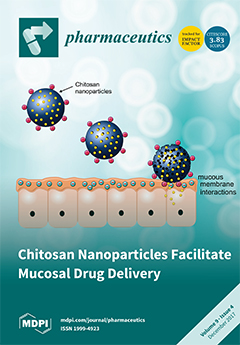Many drugs can cause unexpected muscle disorders, often necessitating the cessation of an effective medication. Inhibition of monocarboxylate transporters (MCTs) may potentially lead to perturbation of
l-lactic acid homeostasis and muscular toxicity. Previous studies have shown that statins and loratadine have the
[...] Read more.
Many drugs can cause unexpected muscle disorders, often necessitating the cessation of an effective medication. Inhibition of monocarboxylate transporters (MCTs) may potentially lead to perturbation of
l-lactic acid homeostasis and muscular toxicity. Previous studies have shown that statins and loratadine have the potential to inhibit
l-lactic acid efflux by MCTs (MCT1 and 4). The main objective of this study was to confirm the inhibitory potentials of atorvastatin, simvastatin (acid and lactone forms), rosuvastatin, and loratadine on
l-lactic acid transport using primary human skeletal muscle cells (SkMC). Loratadine (IC
50 31 and 15 µM) and atorvastatin (IC
50 ~130 and 210 µM) demonstrated the greatest potency for inhibition of
l-lactic acid efflux at pH 7.0 and 7.4, respectively (~2.5-fold
l-lactic acid intracellular accumulation). Simvastatin acid exhibited weak inhibitory potency on
l-lactic acid efflux with an intracellular lactic acid increase of 25–35%. No
l-lactic acid efflux inhibition was observed for simvastatin lactone or rosuvastatin. Pretreatment studies showed no change in inhibitory potential and did not affect lactic acid transport for all tested drugs. In conclusion, we have demonstrated that loratadine and atorvastatin can inhibit the efflux transport of
l-lactic acid in SkMC. Inhibition of
l-lactic acid efflux may cause an accumulation of intracellular
l-lactic acid leading to the reported drug-induced myotoxicity.
Full article






